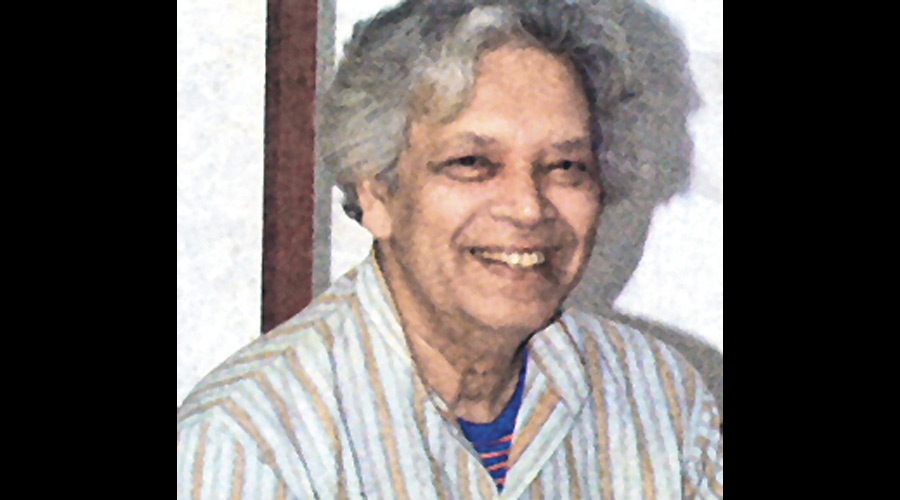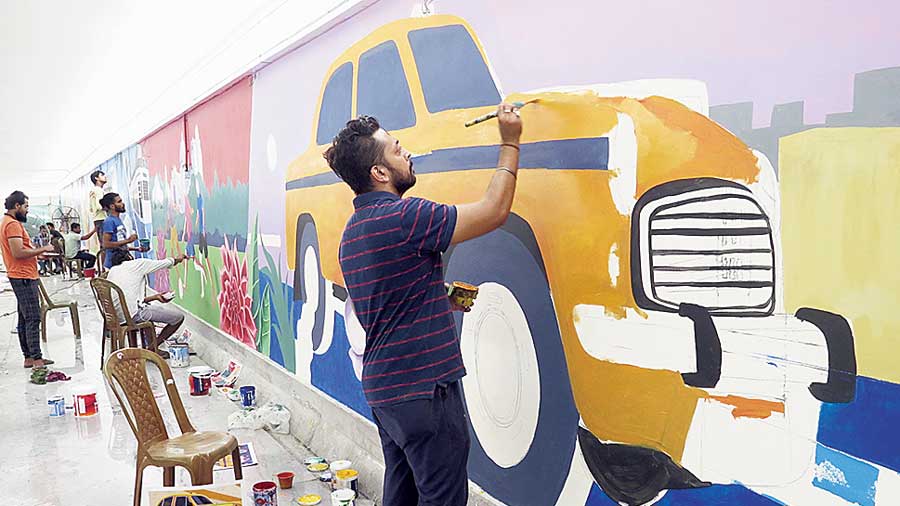Amal Ghosh, the artist who had created Kolkata’s first mosaic mural for the façade of the Brabourne Road branch of UCO Bank way back in 1963, died on Thursday after a brief illness in London, which had been his home since the late-1950s.
He was 89. He leaves behind his wife, Iris, who is an artist and teacher, son and daughter and two grandchildren.
Both Amal Ghosh and Iris were, till recently, regular visitors to Kolkata.
Over the years, the 80ft mosaic mural on the bank building adjacent to Tea Board has retained its colour but is obscured by the greenery and other clutter that have come up on the pavement in front of it.
Ghosh’s family was originally from Baragram in Serampore, but they had moved to Kolkata years ago. Despite opposition from his family, Ghosh had joined the Government College of Art & Craft in Kolkata when Ramen Chakrabarty was principal.
Way back in 1959, he joined the London Central School of Art and Design, where he learnt vitreous enamel, painting and stained glass. Subsequently, he was employed in the college, later renamed the Central St Martin College of Art, as a teacher.
Public art is an important part of Ghosh’s work. He had received numerous commissions from institutions such as hospitals, government offices and community centres and worked with the medium of vitreous enamels and stained glass.
Ghosh was a student in London when he was commissioned to create the Brabourne Road mosaic. While the architect of the building was Brown & Moulin, chartered architects in London, Ghosh was responsible for the design and setting of the mural. The artist’s statement goes thus: “In the 80ft mosaic mural, the artist has symbolically depicted the role played by the bank in the economic life of the nation, while at the same time colourfully dramatising the bank’s role.
“The mural is a blending of colours with abstract pictographic symbols from ancient cultures of India, Egypt and other countries. The sun with red beams on a yellow gold sky supplies the bank with motive power to help run the wheels of industry.
“Under the vast expanse of yellow-gold the green tree stands for vitality of life, the plane suggests modern commerce, the figure represents ‘Kubera’, the God of wealth, the ship symbolises international trade, the bird head connotes keen observation and durability and the wide billowing sails are symbolic of good wind and fortune.”
Ghosh regularly exhibited his work and held workshops here. He was a visiting professor at the Government College of Art & Craft in Kolkata and Visva-Bharati’s Kala Bhavan in Santiniketan, around 165km west of Kolkata.



